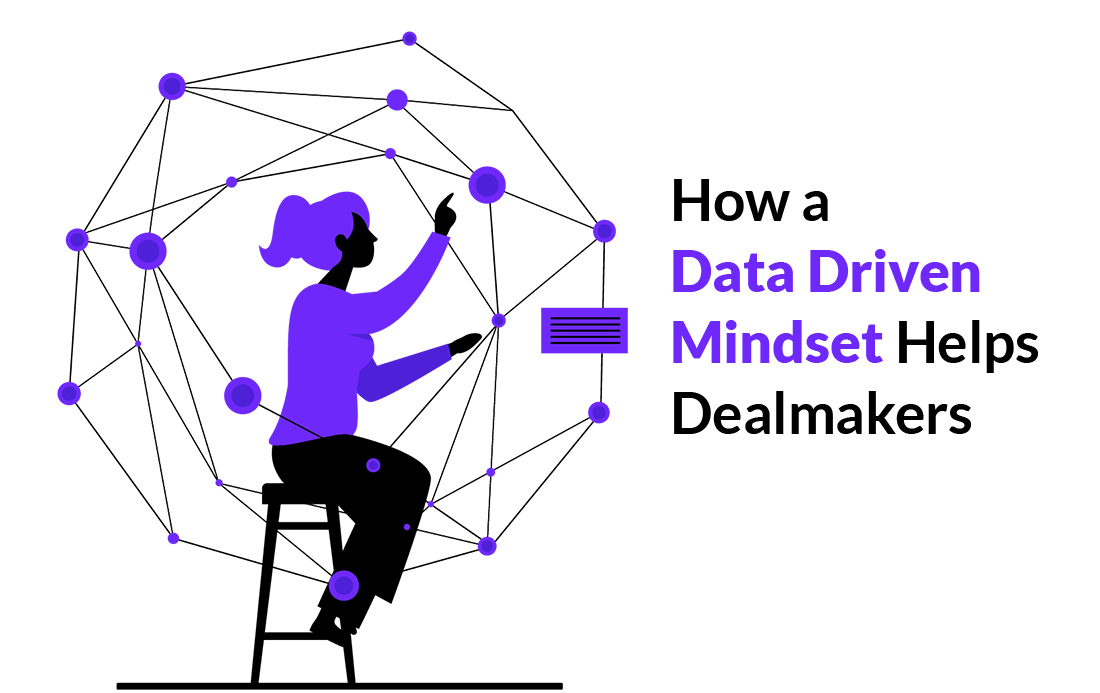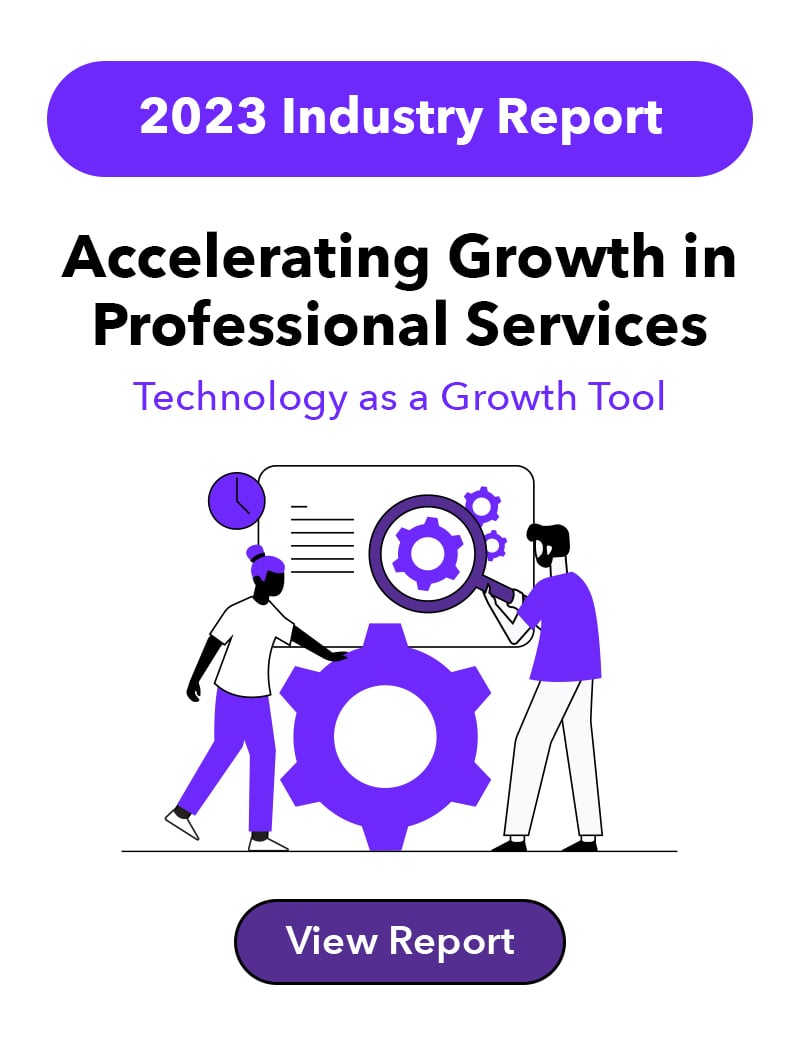Your firm’s data is one of your most vital assets. But if you’re not utilizing it for growth, it’s being wasted.
Data driven decision-making should be at the center of your firm’s goals, especially for your marketing and business development (BD) teams, the dealmakers of your organization.
Both marketing and BD teams need data to drive their decision making around targeting, strategic outreach, and setting growth goals. Without it, they’re essentially going in blind with their campaigns, armed only with assumptions about their ideal clients and the pain points that those clients experience.
It’s more important than ever that marketing and BD teams understand how to use data now, rather than later. Your competitors may already own and activate loads of granular data on their audience; don’t let them get ahead.
The True Value of Data
Data driven marketing and decision making can help your firm grab a piece of the industry’s global growth, which grew 6% from 2022-2023.
Investing in tools that help consolidate and analyze data, allowing marketing and BD to better invest in digital advertising and lead generation tools.
Where B2C invests 5% to 10% of revenue in marketing and B2B invests 2% to 5%, many firms don’t even spend 0.05% to 1%. Without a healthy marketing budget, firms need to be sure their marketing dollars are being spent wisely and data driven decisions can help.
With the right data, marketers and BD can both understand what it takes to meet firm goals and develop plans to achieve them.
What Does it Mean to be Data Driven?
When your firm is data driven, decisions are made using facts, metrics and data. Not intuition or anecdotes alone.
Data driven decision-making helps firms develop and align strategies that will benefit the entire organization. And, according to Forbes, being data driven empowers your employees to make informed decisions.
There are several benefits of being data driven and having insight into client needs like:
- Anticipating client patterns
- Making better business decisions
- Delivering smarter services
When firms make decisions grounded in real data, they have the ability to better understand their clients, improving retention rates. And since retaining clients is about 60-70% less expensive than attracting new ones, this is a lucrative outcome.
How to Apply Data to Your Growth Processes
Your firm’s growth is dependent on data, especially in your marketing and BD processes.
Data driven marketing uses customer insights to develop targeted and personalized marketing campaigns. Data can be used to analyze website traffic, social media engagement and past engagements. The better you can connect with your audience, the more likely you’ll win new clients and strengthen the relationships with the ones you already have.
Start implementing more data into your marketing decisions by using it to understand your buyer personas, creating relevant pitch content, optimizing your marketing and BD efforts and investing in tools that allow you to pull it all together.
Persona building
A Deep understanding of your clients and their needs enables your firm to craft messages that resonate directly with them.
The process starts with identifying buyer personas, or the semi-fictional representations of your ideal customers based on data and research, according to HubSpot. A buyer persona involves knowing more than if a client has children or a dog, it’s about crucial behavioral attributes like how they work, the main goals they have in their career, and how they choose services based on their problems, among many other relevant characteristics.
One way to gather insights about your clients is to use AI to gather feedback. Adding an AI chatbot to your website can ask your clients specific questions and give them a solution, essentially putting them on the top of your BD’s funnel for new clients.
The information gleaned from AI can help both marketing and BD teams better understand their client’s needs and how to market for them.
Creating Relevant Pitch Content
Once you understand your clients’ buyer personas, you can create relevant pitch content that directly targets their needs. A good pitch will inform and educate your clients, encouraging them to seek your services.
When it’s clear that the pitch has been custom-created with them in mind, the prospect is more inclined to take that next step.
Crafting pitches and proposals, especially custom ones, can be time-consuming without the proper tools. On average, professional services marketers and business development professionals waste a minimum of a quarter of their week on tedious, repetitive tasks, like creating pitches from scratch.
So while using data to customize pitch content is crucial to delivering effective presentations, the tedious nature of the tasks create a need for a scalable, automated process to prevent a dip in efficiency.
Tools like Pitchly cuts this time down by an average of 93%. Pitchly uses data driven content to automatically generate tombstones, team bios, case studies, CVs, practice one-sheets and more by populating dynamic templates with a centralized database. The data can be easily filtered and tweaked for each client, engaging your audience while reducing your team’s workload.
Analyzing and Optimizing Marketing and BD Efforts
After researching and tailoring your marketing efforts, data can help your teams analyze the results to adapt future efforts.
Miss an opportunity with a slam dunk pitch or a new campaign? Or did a campaign that you created unexpectedly take off? Looking back on the efforts and analyzing what went right and wrong can help you drive success in the future.
Here are a few key opportunities for analysis:
- Compare your predicted results versus actual results. Did you over- or under-shoot results?
- For email campaigns, track open rates and click-through rates. Find correlations between the best and worst numbers.
- For website pages with an action associated with it, compare view to conversions. Is there a missing piece that’s preventing people from taking action?
- Analyze on the messaging/pain point level. Do some topics lead to success consistently, while others lead to crickets? In pitches, look for when prospects seem to be more engaged.
- Record feedback if you get it. This could be through candid conversations with prospects/clients or through survey campaigns. Track this feedback and lay it out to find correlations.
There is no shortage of ways for you to analyze every campaign or client pitch that you deliver. Whether you invest in creating dashboards that easily present some of this data to you, or you schedule a postmortem meeting for the team to discuss, what matters is that you’re using every initiative as fuel to continue to improve.
Find Tools to Match Your Data Needs
Making data driven decisions is easier when you have the right tools in place. Data software can help:
- Increase efficiencies
- Increase profitability
- Reduce errors
- Retain firm “know how”
- Provide a better customer experience
- And ultimately win new business
Solutions like Pitchly, Upslide, Jotform, Templafy and even Adobe Acrobat can automate the creation of your data driven content. These tools help shorten the time it takes to collect and use data, turning it into custom content that targets your clients and increases your sales.
Adopting a data driven mindset can set your firm up for accelerated growth by expanding your client base. And implementing the right tools to do so makes it easy for your team to deliver custom content that targets your audience and improves the possibility that they’ll buy your services.
Learn how Pitchly’s data driven solutions have helped our clients do just that. Check out our case studies online.
 Jun 6, 2023
Jun 6, 2023




